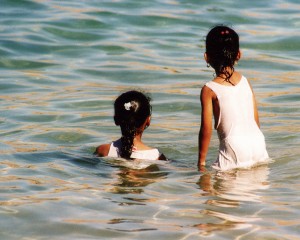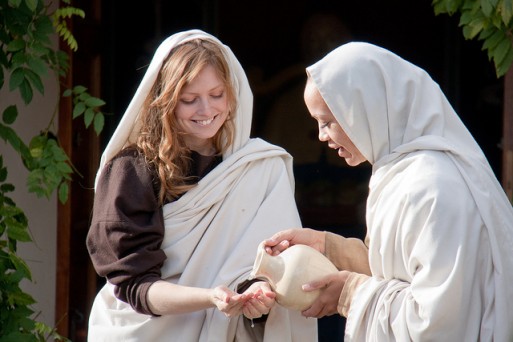Whether you’re observing a traditional Buddhist burial rite, or you’re watching the HBO series Six Feet Under, you might see someone methodically bathe a person who has died. In fact, the act of bathing the dead has existed as a tradition from the days of ancient Egypt up to today.
Why do these distinctly different cultures share this funeral rite?
For many of these cultures, bathing offers purification before the afterlife. It’s also one last way for loved ones to show affection for someone who has died.
For example, in traditional Jewish funerals, family and friends carefully wash a loved one’s body from head to toe. They begin at the head, and work their way down, washing the right side, then the left. They whisper prayers as they clean the body, then dry their loved one off before dressing him or her in his or her final funeral attire. Such a gesture is a way to give dignity back to those who have died. In a way, it also creates a moment of caring for the dead as if he or she was a child again. Thus, the tradition has a “parental” and nurturing feel to it as those closest to the dead take on the role of a caregiver.
This tradition was so common among Jewish families that during the Spanish Inquisition Catholic officials would inspect bodies for cleanliness before burial. Those bodies that looked as if they had been washed were labeled as a secret Jewish practice, and families were punished for heresy.
Both Hindus and Buddhists also use bathing rites in their traditions. In Hinduism especially, any river is considered holy. In some areas, families will take their loved ones out of hospitals on their deathbeds to rest on the bank of a river, as it is believed that taking your final breath at the riverbank is the most beautiful way to die.Finally, at the end of the ritual, the body is placed on a pyre to float down the river.
Indeed, in some cultures, the idea of avoiding contact with a loved one’s dead body is unthinkable. As a result, families will go to any extent neccesary to uphold such a tradition. For example, some countries in West Africa bathe their dead even after their loved ones have died from contagious diseases. Doctors in Sierra Leone suspect that the Ebola virus spread in part because families wanted to touch the bodies of those who had died from the virus. It isn’t easy to give up traditions that have been around for centuries, especially ones as intimate as funeral rites. Families were forced to give up what they saw as an essential part of the grieving process simply to avoid disease.
To touch another person’s body is an inherently intimate act that requires trust and respect. For this reason, most of the cultures who use bathing as a funeral practice only allow close friends and family members to participate.
To be clear, one ought to note that bathing is a tradition with no medical benefit. In fact, some people take medical risks when they clean the body of someone who has died from disease. Yet this tradition remains a staple in cultures all over the world. Many of us want to care for our loved ones, even in death. But how do you care for someone who no longer eats or drinks? You care for the body left behind.

 Bathing Rituals Around the World
Bathing Rituals Around the World





 John Mulaney’s “Funeral Planning” on Netflix: No Real Plan
John Mulaney’s “Funeral Planning” on Netflix: No Real Plan

 Composting Bodies Is Now Legal in a Dozen States
Composting Bodies Is Now Legal in a Dozen States














